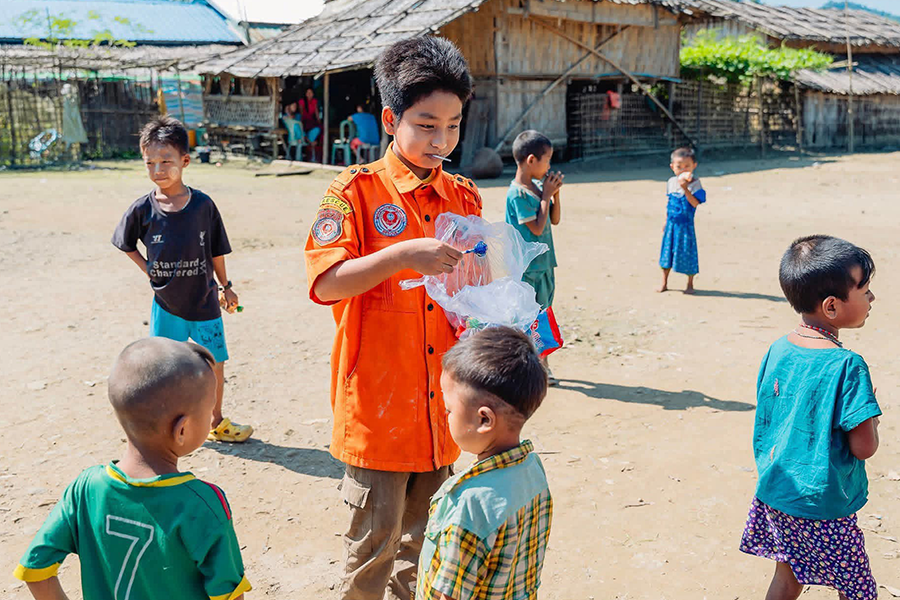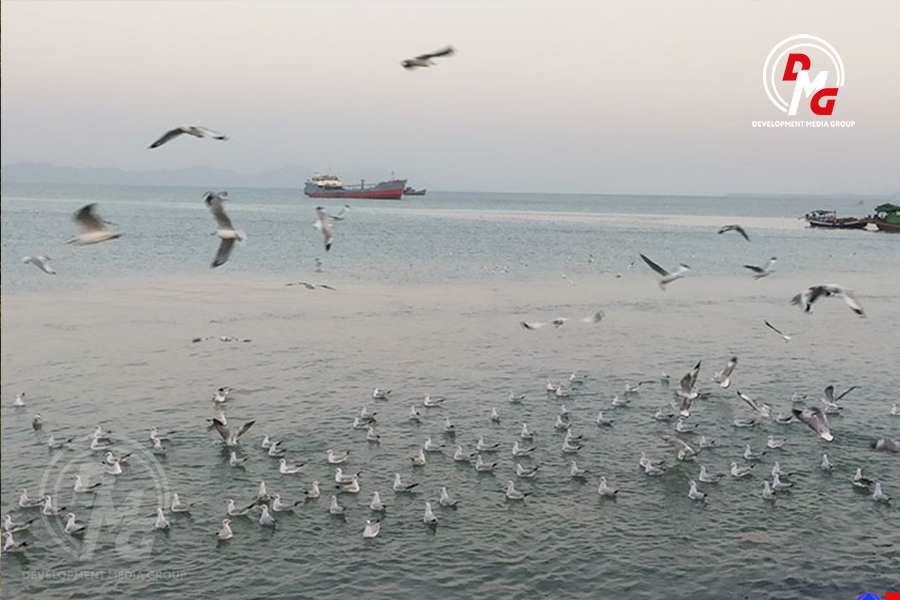- Junta unable to hold elections in dozens of wards and village-tracts in Sittwe, Kyaukphyu
- Fighting escalates between Myanmar military, Arakan Army in Ayeyarwady Region
- Regime steps up civilian arrests in Sittwe
- ULA safeguards Mrauk-U's ancient heritage
- Arakan on the Edge: What the DMG Landmine Impact Report Reveals About Myanmar's Deepening Humanitarian Crisis
IDPs in Arakan brace for coming monsoon rains
Although the worst of Cyclone Amphan, currently churning in the Bay of Bengal, is projected to pass west of Arakan State, the Category 5 storm is a reminder that the region’s monsoon season is looming. It looms arguably larger for the tens of thousands of people displaced by conflict in Myanmar’s westernmost state.
16 May 2020

Min Tun | DMG
May 16, Sittwe
Although the worst of Cyclone Amphan, currently churning in the Bay of Bengal, is projected to pass west of Arakan State, the Category 5 storm is a reminder that the region’s monsoon season is looming. It looms arguably larger for the tens of thousands of people displaced by conflict in Myanmar’s westernmost state.
According to a recent statement from the Rakhine Ethnics Congress, more than 164,000 IDPs are scattered across Arakan State, staying in schools, monasteries and over 150 camps, or seeking shelter in the homes of relatives and neighbours.
They often live in long tent “houses” that were set up more than a year ago, now already dilapidated and in need of repair or replacement. Unfortunately, the average inhabitant is not likely to have the funds to do the necessary repair work.
According to Rakhine Ethnics Congress Secretary U Zaw Zaw Tun, the tent longhouses’ general state of disrepair means that people are more likely to encounter difficulties as the monsoon rains arrive.
“There will be more problems with the shelter during this year’s rainy season than last year. The reason being that the shelters the IDPs use are in poor condition and won’t withstand the weather. IDPs are really only able to live in structures that were not damaged beyond repair last year,” he said.
Camp officials are especially worried that the necessary preparations and repairs for the coming monsoon season have not been carried out, but there are other problems as well: Most IDPs in Myebon town are staying in monasteries and schools. The school term begins during the monsoon season and those people staying there will have to move out and find alternative lodgings, which may well create problems, says camp official U Aung Myint Thein.
“There is simply no land available for us to build a camp. No funding has been provided to build shelters. It’s really difficult. There isn’t that much cause for concern now as it’s still summer, but the coming rains and wind will create a lot of problems for them,” U Aung Myint Thein said.
One woman whose home is in Tinma Gyi village, Kyauktaw Township, but has sought shelter and safety in Sittwe, said IDPs there could only put up simple shelters from bits of plastic sheeting. She’s afraid they won’t stand up to the inclement weather to come.
“The monsoon rains and wind create so many problems. It’s not safe,” she said.
“We need buildings, something made from iron, which is strong and secure; not structures made from sheets. Our shelter is made up of bits of plastic and while the rains haven’t come yet, when the winds blow, the sheets get torn away. The children have to climb up to do the repairs and put them back in place all the time. This is what we have to do.”
Daw Hla Yin Phyu is currently staying in Sittwe’s Shwe Parami Monastery, along with around 90 other IDPs. They reportedly have difficulties getting even basic necessities like food and water.
Not long ago the Arakan State government made an announcement stating that camps could not be built without government permission. The purpose of tightened government oversight was to prevent the camps from becoming scattered and spread out, and to better ensure the camps’ security, the announcement read.
Lawmakers had led efforts to build a camp in Rathedaung town, but official permission from the government was not granted and construction was blocked on April 30.
According to the Arakan State government, seven IDP camps have been built in six townships. The government says it plans to build more if necessary.
Currently only about 10% of people displaced by conflict stay in camps built by the state government, according to U Zaw Zaw Tun.
“There are only a few government camps. People need to protect themselves against COVID-19, and therefore try to stay in places that are more spread out to avoid people crowded together in one place. They need to use existing structures for shelter. It is inevitable that some live in government-run camps,” he explained.
Government-built IDP camps are often located far from people’s homes and provide little if any opportunity for livelihoods and employment. Many IDPs have refused to relocate to the government camps.
Camp officials explain that while it is difficult for IDPs to live in these government camps, sites that have been built with the support of private donors lack the funds required for the constant renovations, repairs and upkeep required. The coming monsoon season will create more difficulties and problems for the IDPs, they said.
As conflict between the Tatmadaw and the Arakan Army is well into its second year and showing little sign of abating any time soon, returning to homes remains a distant prospect for most — with imminent wet and windy days to prepare for in the interim.





.png)











